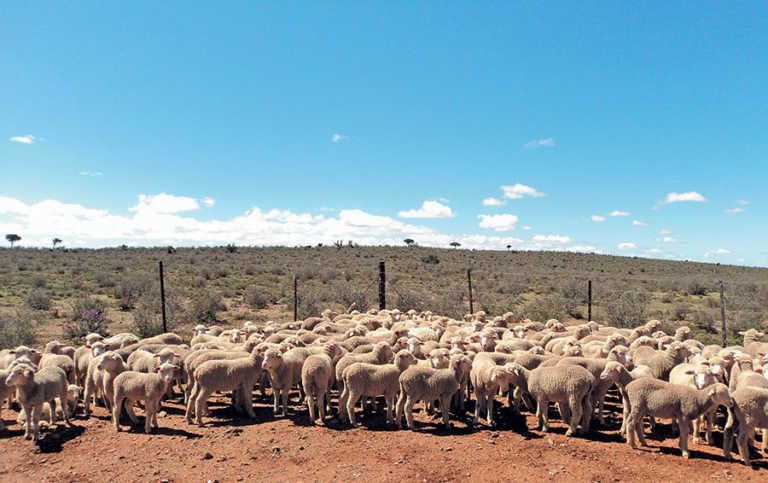Retail butcheries and supermarkets are increasingly demanding younger carcasses as the meat is more tender, and consumers want a certain amount of fat covering the carcass. It is therefore crucial for the communal livestock farmer to follow three steps:
- Use the correct meat-type breeding genetics.
- Ensure your livestock is in good body condition when marketing. This is achieved more easily and cheaply through good veld or cropland management than by buying expensive bagged feed or lucerne/grass bales.
- Institute proper animal health regimens such as an annual vaccination programme, dipping for external parasites, and dosing for internal parasites.
READ Boran crosses produce fine weaners for the feedlot industry
It’s also important to know what butchers and abattoirs look for. Simply put, they want carcasses of the correct age with a rounded conformation (shape) and the ideal fat cover.
Meat-producing cattle or sheep breeds show more muscle bulk on the carcass, and valuable cuts, including rump steak, lie on the animal’s hindquarters. By contrast, dairy breeds such as Jerseys and some Nguni-type cattle have far smaller, less rounded hindquarters.
Abattoirs check age by looking at the number of permanent teeth in the mouth.
An animal that hasn’t yet cut any adult teeth and still has a full row of baby teeth on the lower jaw is the most desirable, and the carcass is stamped with a purple letter ‘A’. The carcass is then graded according to conformation; good conformation with good muscling is a ‘3’, and poor conformation a ‘1’. This number is also stamped onto the carcass.
The grade defines the price
An animal with one or two adult teeth is marked with a green ‘A/B’. While it is not worth as much as an A-grade carcass, the meat is still quite tender and the price is usually higher than for older animals.
An animal with three to six teeth is graded ‘B’ (brown). The meat is somewhat tougher than the A/B grades and the price per kilogram of carcass weight will be lower.
READ The adaptable Afrisim: ideal for feedlot and veld
Animals with seven to eight teeth are fully mature; they are marked ‘C’ (pink/red). Their carcasses are the least valuable.
The difference in price between an A-grade and a C-grade carcass can be as much as R10/ kg.
Put another way, a decent A-grade carcass may realise as much or even more money than a C-grade carcass that is considerably heavier. This is important to know, as you would have invested far more money and time in older C-grade animals than in A- or B-grade animals.
READ Breeding record-breaking Mutton Merinos
All grades are also rated on a scale of 0-6 for carcass fat cover; ‘0’ is very lean and ‘6’ is perhaps too fat. Grades 0 and 1 realise far lower prices than grades 2 and 3 (the most sought-after in the market). It is important to understand these grades before taking your animals to an auction or abattoir.
Weaners or lambs, which are too light for slaughter, bring in good money if sold to feedlots through ‘live weight marketing’: the calves or lambs are weighed and sold for a per-kilogram price. A feedlot lamb should weigh 25kg to 35kg, and a feedlot calf 190kg to 250kg.
Meat types only
Remember that most big feedlots will buy only beef-type calves or mutton-type lambs. They are not usually interested in Nguni- or dairy-type calves or wool-sheep lambs because of slow growth rates, poor body fat ratios, and poor carcass conformation.
It is a good idea to consult a reputable livestock marketing agent before selling your livestock. The agent can advise you on current prices and what you can expect to obtain for your animals.
Shane Brody is involved in project management as part of an outreach programme aimed at transferring skills to communal farmers in parts of the former Ciskei and Transkei.



